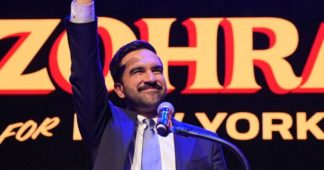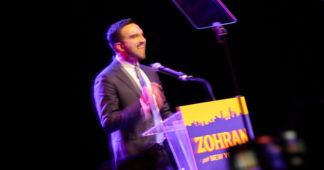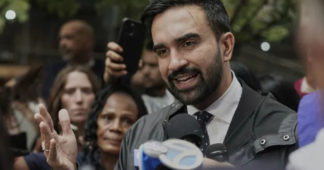Zohran Mamdani, New York City and the promise to revive social democracy in America.
Adam Tooze Chartbook 415
Nov 09, 2025
The election of Zohran Mamdani as the mayor of New York City was a political shock well captured by the tweet of the night:
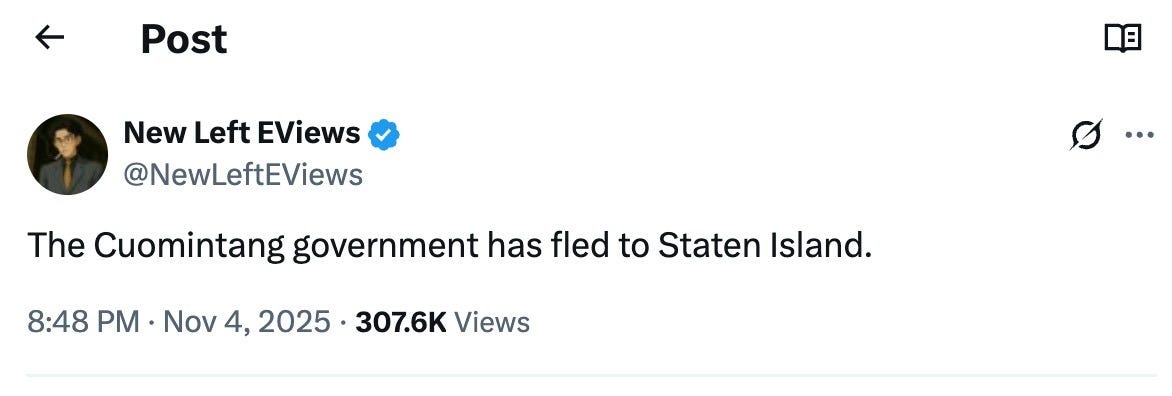 Mamdani scored just over 50 percent of the citywide vote. There was a conservative vote for Cuomo across the city. But the real strong hold of Cuomo’s brand of machine politics was an offshore island (Staten island).
Mamdani scored just over 50 percent of the citywide vote. There was a conservative vote for Cuomo across the city. But the real strong hold of Cuomo’s brand of machine politics was an offshore island (Staten island).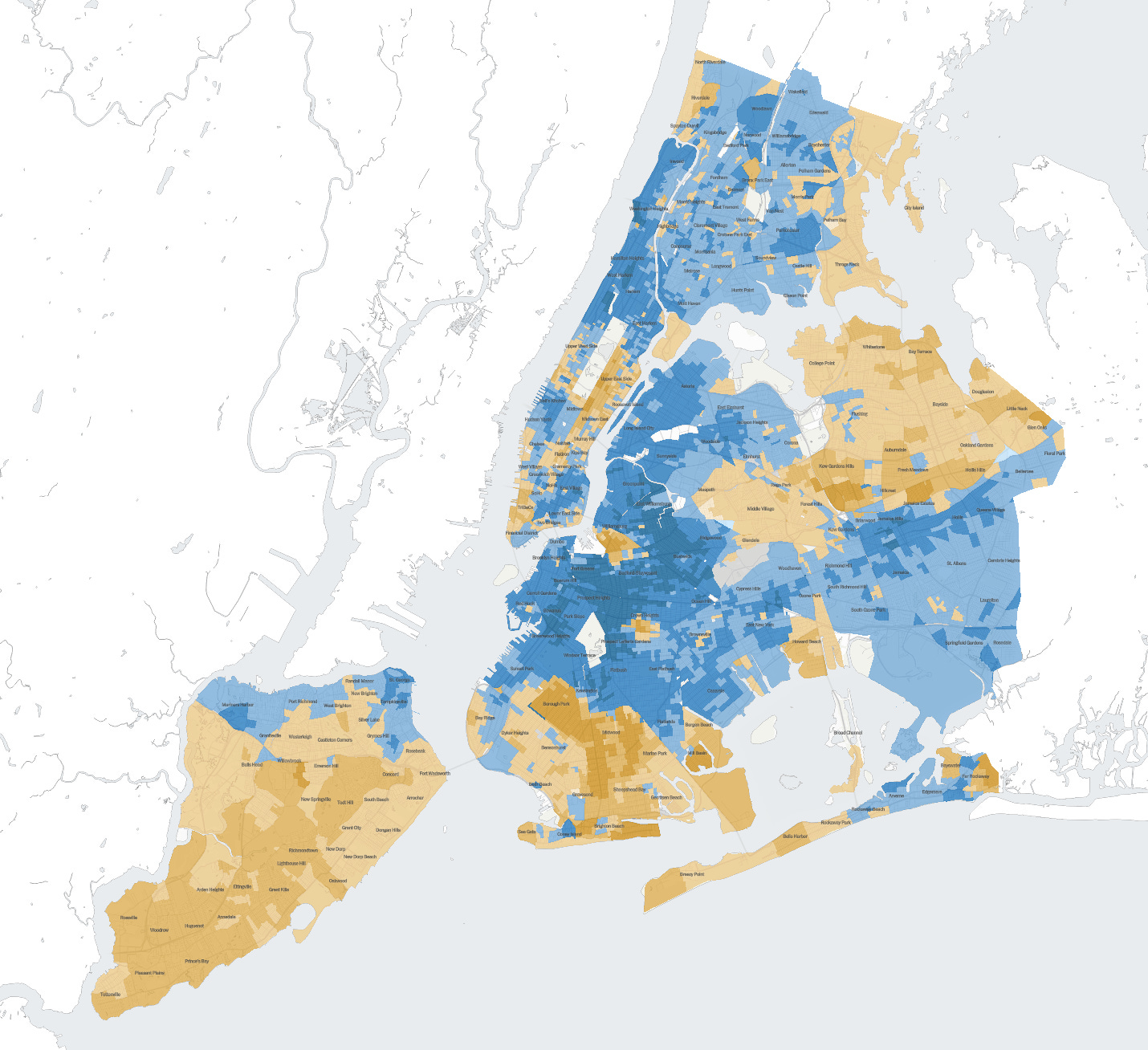
Source: New York Times
Mamdani’s dramatic victory has at least two defining preconditions.
The first is a political current of radicalism in New York which has developed from 2008 and Occupy in 2011 by way of the de Blasio mayoralty (2014-2021) which was actively backed by the Working Families Party, BLM in 2013-2014 and the Bernie Sanders campaign of 2016, which saw the emergence of the Democratic Socialists of America as a significant political force, notably in New York City. The New York left of the 2010s and 2020s has spawned cultural products like Jacobin magazine and political programs like Sunrise and the Green New Deal. Since 2018 its national figure head has been AOC. At the state and city level it was for a long time focused on the hard grind of winning Assembly seats in the state capital in Albany, where power largely resides in the state of New York. The collapse of the Eric Adams regime in the city opened the door to a radical alternative in the city itself. The discrediting shambles of Democratic Party politics at the national level from 2023 onwards, exemplified by the Biden administration’s Gaza policy, added further impetus.
The other essential precondition for the victory is that Mamdani spoke directly and relentlessly, with extraordinary message discipline, to the central concern of the vast majority of New Yorkers: the cost of living. Such a concentration of the vast majority of an electorate on a single material question cannot be taken for granted. Mamdani’s campaign exploited this conjunctural opportunity brilliantly.
You might say that the issue of affordability is a general one and that in many places in the US it has in fact been overhyped. A price shock is not an inflation. And inflation perceptions are not simply a reflection of the “reality” that is captured in statistics, but mediated by politics and media coverage.
But in New York City, data, experience and discourse converge. The crisis of affordability is real for the vast majority of the people who live and work here.
The Economist dramatized the situation with a graph of private-sector real hourly earnings in the city, which showed an almost 15 point downward divergence of New York City relative to the rest of the country.

As usual, the Economist’s chart game is sharp. A figure for average wages across all sectors, not just the private sector, compiled by New York City’s own Rent Guidelines Board – the body which makes recommendations on rent increases – also shows a decline in real wages, but far less severe than that in the Economist graph.
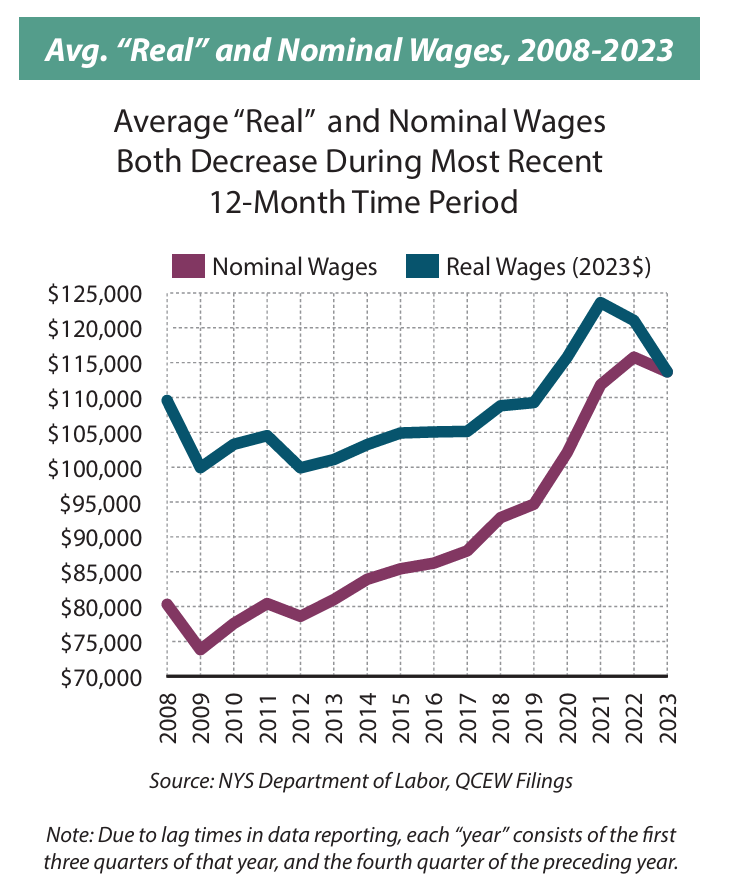
Source: RGB
Comparative data on city development from James A. Parrott at the Center for New York City Affairs confirms that New York City is the only city in the US to have seen a significant real median household income fall between 2019 and 2024.
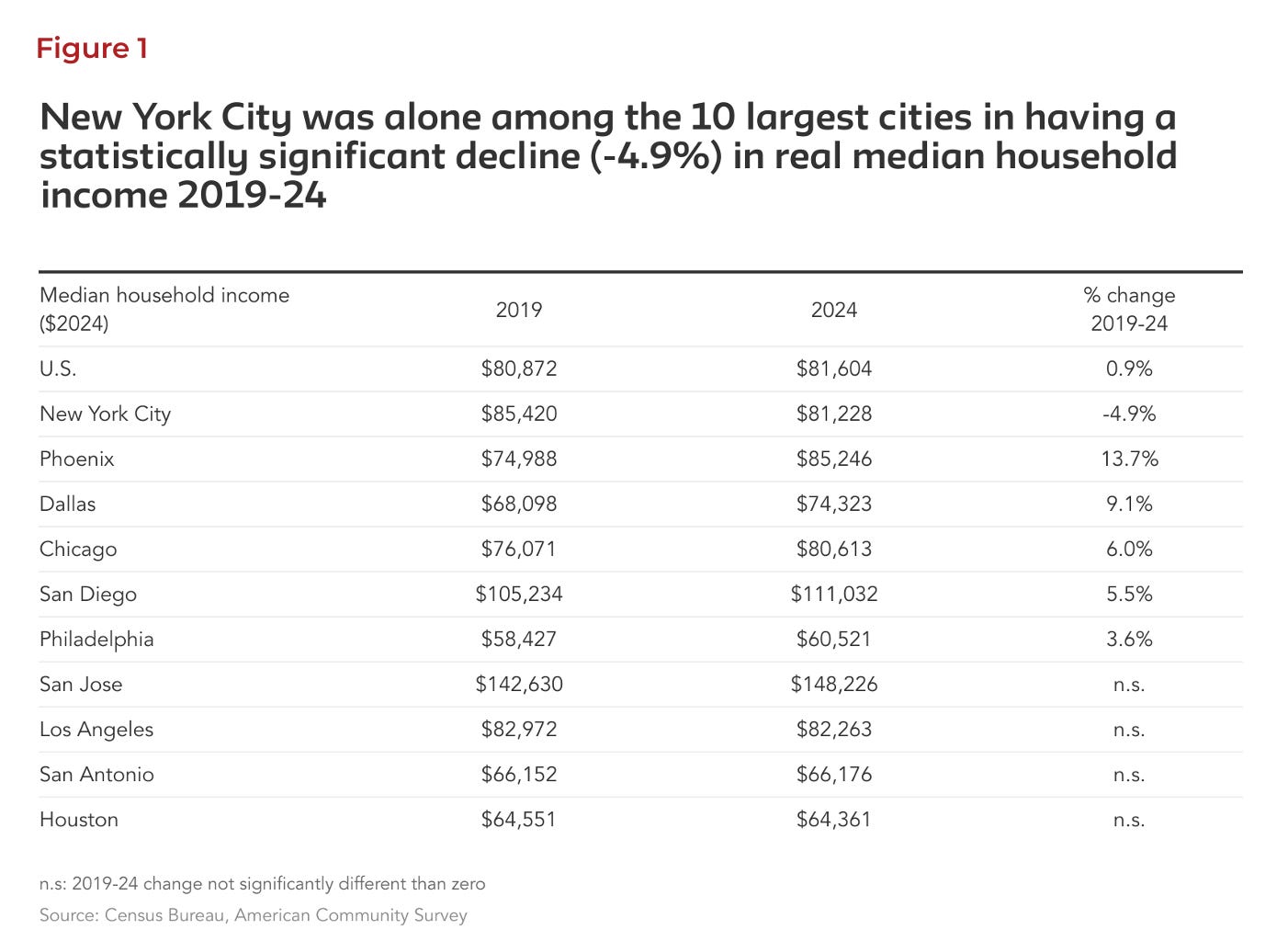
Source: Center for New York City Affairs
In a city as polarized, and diverse as New York, both average and median measures easily deceive.
At the bottom end of the distribution, the latest data from the Poverty Tracker Research Group at Columbia University reports an alarming rise in poverty:
based on their own survey of approximately 3,000 NYC respondents, the report found that the overall supplemental poverty rate (i.e., the proportion of persons with income below 100% of the supplemental poverty line) increased from 18% in 2021 to 23% in 2022. While the supplemental poverty rate rose by five percentage points for adults in the survey, it rose by 10 percentage points for children (from 15% to 25%). The report estimates that in addition to the 23% of New Yorkers living below the supplemental poverty line in 2022, an additional 33% of New Yorkers are living between 100% and 200% of the supplemental poverty line (a total of 56% of New Yorkers that the report classifies as “in poverty or low-income”).31
The headline is simple: more than half of our fellow inhabitants of New York City are poor or on low-incomes. It is a shocking statistic but one that will not come as any surprise to anyone who lives here and thinks about it for a second.
Meanwhile, those of us on higher incomes are, for the most part, doing spectacularly well.
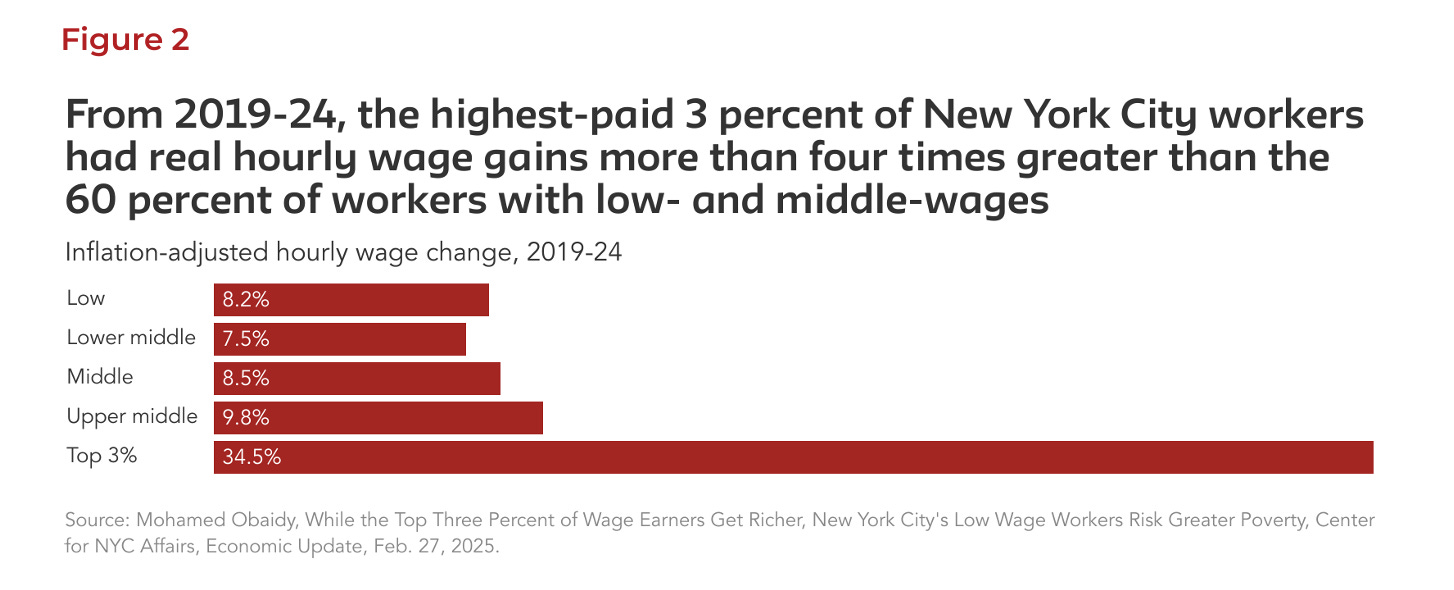
The driving engine of inequality at the top, is Wall Street. As the office of the state comptroller reports:
The average annual salary, including bonuses, in New York City’s securities industry rose 7.3% to $505,630 in 2024, and the bonus pool grew 34% to a record $47.5 billion, equal to an average bonus of $244,700 per employee. The average salary in the securities industry was nearly five times the average salary of the rest of the private sector ($101,760) in the city, and 59% higher than the next highest industry ($318,360 in web search portals and other information services). The industry’s statewide average salary was $484,300, more than double the average in the rest of the nation ($238,200). NYSE member firms spent nearly 10% more on all forms of employee compensation, including salaries, bonuses and equity awards in the first half of 2025 compared to the same period in 2024. Combined with higher profits and relatively stable employment, this signals a likely rise in bonuses over last year. Bonus increases will vary among different subsectors. While the city’s latest budget projection expects a 14% decrease in the industry’s bonus pool, DiNapoli’s office anticipates it will grow based on first half indicators.
Back in 2003 the-mayor Bloomberg declared that he wanted to reposition New York City as a “luxury product”. A generation on that is indeed the outcome of historic trends that can be traced back to the city’s fiscal crisis of the 1970s and the rise of the new Wall Street. But, even in its own terms, the idea that an entire complex urban eco system can be compressed into a vision of luxury boutiques and palatial condos is silly. In New York in the 2020s it is reaching breaking point.
It clashes not just with the visible reality of a broad base of poverty, but also with the crisis of affordability facing better-off working class, middle-class and Professional Managerial Class voters, the strata that make up the majority of the active electorate.
As one New York Times piece put it:
“It’s an existential backlash, a wholesale rejection,” said Jonathan Mahler, author of the new book “The Gods of New York: Egotists, Idealists, Opportunists, and the Birth of the Modern City: 1986-1990,” and a staff writer for The New York Times Magazine. “These people who would have been yuppies 40 years ago are now kind of struggling,” Mr. Mahler said. “They are making $120,000, $140,000 a year, and that’s not enough to live an upper-middle-class life in New York at all. And that’s the Mamdani voter.” … Families have to make at least $100,000 to afford basic necessities, according to a separate report. And families need to be bringing in at least $334,000 to comfortably afford child care for one toddler, according to the city comptroller’s office. The price of day care now averages over $23,000 a year — and much more in some neighborhoods.
New York is a city in which it is not absurd to say that a large slice of the middle class share everyday interests and experiences with the 56 percent of the population who are either on low-incomes or in poverty. Mamdani’s tightly disciplined message promises that his city administration will speak to those shared experiences by delivering better public services, notably free city buses, access to childcare and rent control.
It is the message of common need that is so crucial. To struggle to cope with life in modern-day NYC is not so much a cause for stigma, as a badge of membership.
And personality matters in city politics in a distinctive way. Though his own class background is comfortable, Mamdani’s affability and openness are the kind of characteristics that ease daily life in a densely packed and highly diverse city. Rather than Bloomberg’s image of the mayor as the manager of a luxury mall, a large part of Mamdani’s appeal is that he embodies the personal attributes you would wish for in a co-citizen. Just ask yourself the question, who would you rather be standing next to in a densely packed and stuffy subway car, Mamdani or Cuomo? Who would you rather share a grocery line with? Who would you rather bump into in the dog park? Who would you rather have as your kid’s school principal? Or as your Uber driver? Or your Uber client? Easy-going, energetic charm aren’t just personal assets in a city like New York, they are a social necessity, at least if we want to imagine daily life as something other than soulless grind or an exhausting sharp-elbowed scrum.
Mamdani’s vision is one that appeals unapologetically to the young and to those who have more recently arrived. New York has always been a global city, but what that means is constantly shifting. Mamdani represents a 21st century vision of the global city. That is one of the messages sent by his embrace of his Muslim identity. This is a city not just for those who arrived in the 1890s, or the 1920s or the 1960s, but for those who arrived here in the great migration surges of the 1990s and early 2000s.

Of course, you could say that personal charm may be great on the street, it may not be what is needed in City Hall. That is the next test for Mamdani and his team.
Though proudly claiming the mantle of democratic socialism, by any historic standard Mamdani’s policies and pledges are focused, modest and “deliverable”: make the buses better ($700 million), deliver childcare ($5-8 billion) and stabilize rents. Then there are corollaries that are tougher, such as countering the disincentive effects of rent control on housing construction and maintenance. But for a city economy that is rated at roughly $1.1 trillion, these are not large amounts of money.
To deliver he has at least two immediate challenges. One is to manage the key players in the city establishment and workforce. Notably he has to manage interests like the NYPD and the teachers. Mamdani’s predecessor as a progressive mayor, Bill de Blasio was made to feel what it means to alienate the NYPD. Mamdani will struggle to avoid a slow police strike.
As for Mamdani’s spending plans, it will depend on fiscal politics. Fiscal politics at the state and city level in the USA is very different from its equivalent at the national level. Whereas fiscal politics in Washington is a disinhibited and unbounded fight, in which budgets are relatively unconstrained, at the state and city level, balanced budgets are enforced, and borrowing it tightly linked to spending goals and funding streams. Mamdani’s plans are in the same vein. He proposes to fund the expansion of childcare by raising a 2 percent addition to income tax on 90,000 or so New Yorkers fortunate enough to declare more than $1 million in taxable income and by raising corporate tax rate from 7.5 to 11.5 percent, in line with neighboring New Jersey.
In a really excellent piece in Jacobin, Nathan Gusdorf lays out the stakes.
The main fiscal fight in New York during Mamdani’s term will likely not be at the City level but at the level of New York State. The fiscal policies that were enacted by the Republican majority in Washington DC this summer impact New York state and New York City directly. On the one hand they gave away huge tax concessions to some of the richest people in the world. On the other hand they impose such severe cuts in Federal support for state level social programs that Albany will no longer be able to escape the choice between “raising taxes (anathema even to most Democrats) and allowing a dual social crisis of rising hunger and the widespread loss of health insurance.” Albany and NYC together, therefore, need to cooperate to claw back the huge free gifts delivered by Trump to pay for upholding and developing the welfare systems on which a decent life in the city increasingly depends. As Gusdorf explains: “Childcare is probably the most fiscally interesting proposal, with cost estimates ranging from $2.5 billion to $6 billion per year, depending largely on assumptions about uptake rates and worker compensation. The rent freeze does not itself cost money, but the city will need to subsidize building upkeep so that unprofitable rent-stabilized buildings do not fall into disrepair. And the plan to build two hundred thousand units by borrowing $70 billion is likely to be financed by multiple mechanisms including long-term debt and spread out over many years of construction, such that it would likely raise annual debt service costs by around $3 billion per year. … These costs would all be covered by Mamdani’s proposed tax increases … which are designed to raise $10 billion annually. There will inevitably be a conflict between raising taxes to cover the OBBBA impacts on older programs and raising taxes to pay for new programs, but the city and state economies are strong enough to handle the tax burden. The challenge will be twofold: managing trade-offs in the city budget among competing progressive policy priorities, and overcoming the anti-tax sentiment that forecloses social democratic fiscal policy. But if Mamdani can show that a socialist mayor can run the country’s most complex city without fiscal collapse, he’ll do more than deliver free buses — he’ll rewrite the rules of what’s politically and economically possible in America.”
.
We remind our readers that publication of articles on our site does not mean that we agree with what is written. Our policy is to publish anything which we consider of interest, so as to assist our readers in forming their opinions. Sometimes we even publish articles with which we totally disagree, since we believe it is important for our readers to be informed on as wide a spectrum of views as possible.

